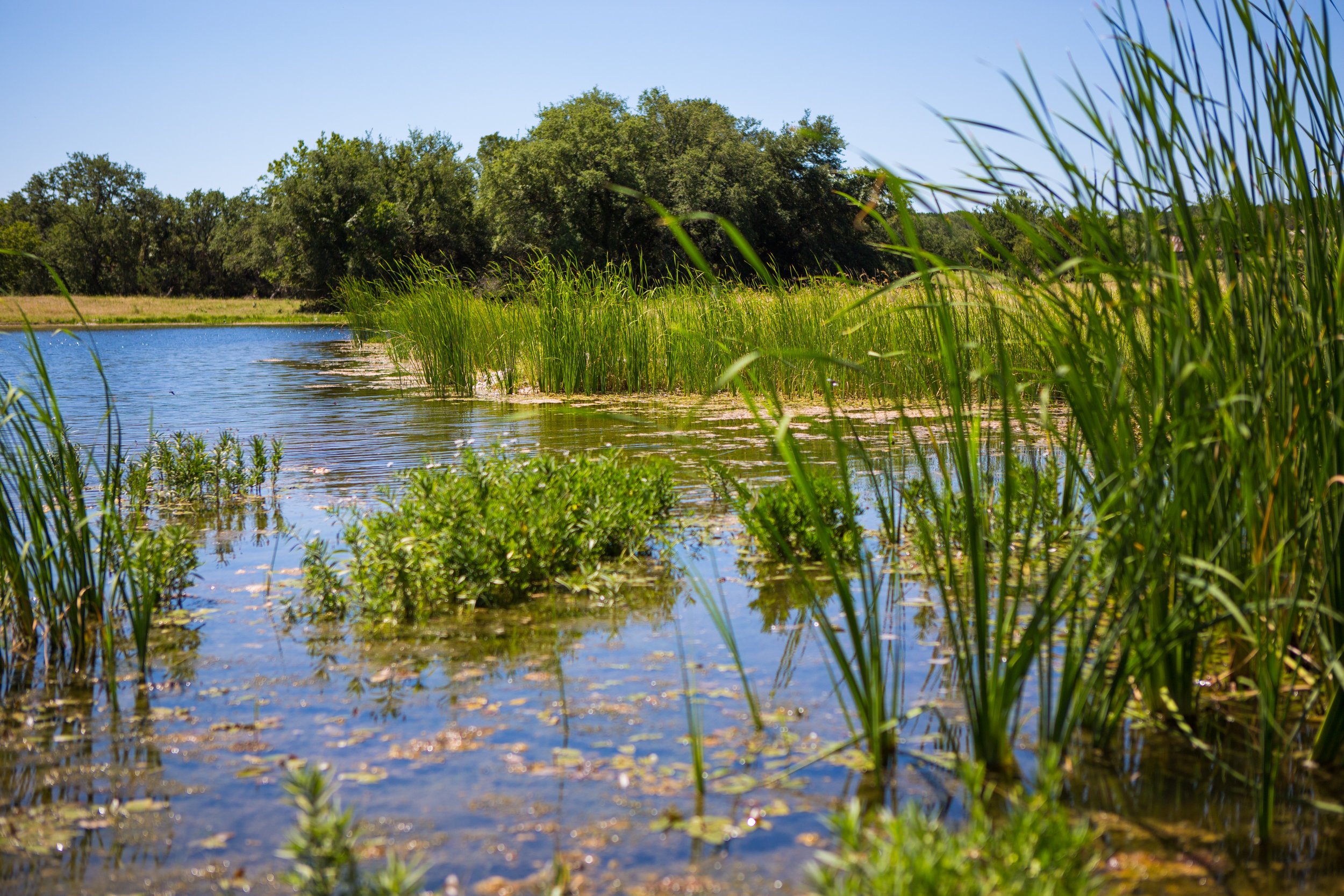
Ranch Stewardship
The 10xXx Ranch is an outstanding example of how stewardship of the land within a working cattle ranch serves to enhance the natural environment. The Texas cross-timbers area has an invasive tree species that ultimately destroys the grazing grassland and the associated wildlife. This tree is locally called a Cedar, but it is actually a Juniper. The old timers to the area have stated that the cedar trees have invaded the land because of overgrazing, land fencing, and restricting the natural wildfires (which cleared all cedars and allowed the natural grass to immediately recover). The importance of Cedar control cannot be overstated. Cedars suck huge volumes of precious surface water, shade the grass which prevents plant growth, and form such a dense brush thicket that even deer can’t navigate through it. Water is so very valuable on a ranch. The 10xXx Ranch has built or enlarged over 20 surface water impoundments. These lakes and ponds provide life and recreation for people, livestock, wildlife, birds, and fish. The fact that Bald Eagles now frequently visit the ranch to partake of its bounty is proof of the ranches success in ranch stewardship.

Cedar Clearing
The single most important improvement that has occurred on the 10xXx Ranch is Cedar control. In 1998, the ranch started clearing certain areas by bulldozing cedar trees. This method worked, however bulldozing disrupted and scarred the surface of the land plus it created huge piles of brush and dirt that had to be burned and re-bulldozed. As objectionable as this was, it was the only method available. In 2000, a “cedar mulching” type of machine was developed. The Cedar Mulcher or locally called “Cedar Eater” has been used to clear nearly 3000 acres of cedar infested ranch land. The Cedar Eater instantly mulches the standing cedar trees into a flower bed type mulch which kills the tree and absorbs and holds any moisture from rain. The dormant native grass seeds start sprouting almost immediately and within a year or two a natural carpet of grass covers the whole area. This resulting natural grass is a beneficial food source to livestock and wildlife alike. See Cedar Eater Company… The grass prevents erosion and holds even more water to be absorbed into the land. In recent years Texas has been plagued with massive wildfires. The major culprit of these wildfires is the fuel provided by cedar tree infestation. With cedar control, the fuel for some if not most of these wildfires is eliminated.

Water Conservation
In North Texas, the annual rainfall varies from a low of about 25 inches to high of about 45 inches with an average annual rainfall of about 36 inches. The problem for the rancher is that the water may come in a light 1/4 inch rain one month and the next month the ranch gets 4 inches in one day. In the old days (prior to about 1950) the live water creeks and rivers, plus the water wells outfitted with windmills were the only effective way for livestock and wildlife to access water. After about 1950, ranchers started building ponds which captured runoff water. Since then, knowledge and pond building expertise has greatly increased. Ranchers are now able to build retaining ponds and lakes quickly and effectively. When Barnett Shale natural gas was discovered in nearby Johnson and Somervell Counties, the 10xXx Ranch leased the ranch to a explore for gas in 2004. Two gas wells were drilled with the stipulation that the energy company must also build a lake for fish and wildlife for each gas well drilled. Two new lakes were built under that program. While the gas wells turned out to be non-producers, the ranch was permanently enhanced by the gas companies drilling efforts. The ranch has impounded over 1000 acre feet of water in lakes and ponds. This captured water would have previously run off of the ranch, probably all the way to the Gulf of Mexico. These new lakes feed livestock and wildlife alike and provide beauty and recreation to visitors. Additionally the ranch has built terraces which direct runoff water from far away hills into retaining ponds as much as one mile away. This effectively doubles or sometimes triples the normal runoff capture area of a pond or lake.

Ranch Roads
The ranch has more than 60 miles of paved roads weaving throughout the ranch. These paved roads provide easy all weather access to the lakes, the cabins, and the wildlife. These paved ranch roads certainly are unusual for a working ranch, but they provide such a pleasant experience for ranch visitors and ranch management alike, that it makes slow, bone jarring, pickup rides just to see wildlife and livestock a thing of yesteryear.


















